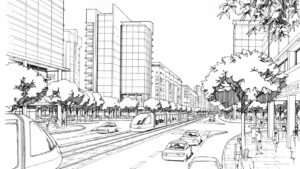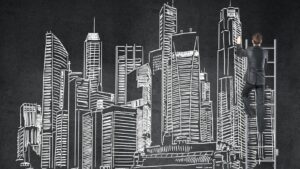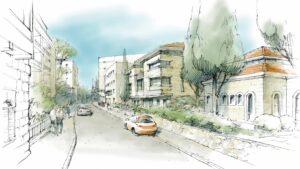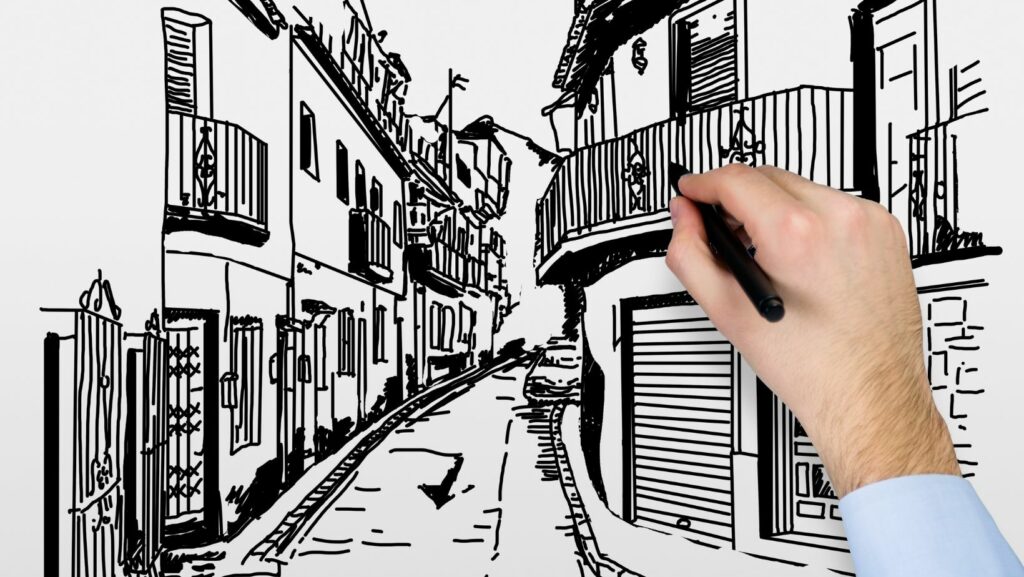Capturing the essence of a bustling city through drawing is an art form that combines creativity with observation. Whether it’s the towering skyscrapers, the intricate network of streets, or the vibrant life on the sidewalks, cityscapes offer endless inspiration for artists. Drawing a city involves more than just replicating its physical structures; it’s about conveying the energy and stories that pulse through its veins.
Artists are drawn to cityscapes for their dynamic compositions and the challenge of depicting movement and depth. From the play of light and shadow on glass buildings to the historical charm of cobblestone streets, each city presents a unique character waiting to be explored on paper.
drawing:d6ivxwq14-e= city

Drawing cityscapes involves a deep understanding of an urban setting’s essence. Artists capture not just the skyline, but the pulse of urban life. They focus on landmarks, street scenes, and facades to represent the city’s character. Artists often incorporate bustling streets and architectural details into their work. Capturing the energy, they portray how urban environments constantly evolve.
Cityscapes offer diverse compositions, blending historical architecture and modern structures. The art of drawing:d6ivxwq14-e= city requires recognizing how light and shadow interplay with city forms, creating depth. Artists use perspective to show the cityscape’s scale and vibrancy. Techniques vary, including sketching, watercolor, and digital art, allowing for unique portrayals.
Drawing cityscapes provides endless exploration opportunities as cities expand and transform. Artists aim to evoke emotions that resonate with viewers by illustrating these dynamic spaces. With a keen eye, they document how urban landscapes unfold, capturing the stories they hold.
Essential Tools for drawing:d6ivxwq14-e= city

Artists rely on specific essential tools when drawing cityscapes to capture intricate details and urban dynamics. Quality sketchbooks provide a sturdy canvas for pencil and ink drawings, essential for detailed city scenes. Mechanical pencils offer precision in depicting fine architectural lines and textures found in city environments. For adding depth through shadows and contrast, high-quality ink pens become crucial tools.
In digital drawing, a tablet and stylus allow artists to create intricate and vibrant cityscapes with ease. Software like Adobe Illustrator aids in layering and refining compositions. Watercolor sets and brushes enable artists to paint fluid interpretations of city life, capturing the movement and energy inherent in urban spaces.
Erasers and blending tools assist in refining sketches and blending colors, essential for achieving realism in city drawings. Finally, portable easels and bags facilitate on-location sketching, allowing artists to capture cityscapes directly from observation, ensuring authenticity and unique perspective in their artwork.
Techniques for Capturing Urban Landscapes

Capturing urban landscapes requires a blend of observation and creativity. Line drawing forms an essential technique where artists sketch city outlines with precision to capture the essence of urban landscapes. Adding depth, perspective drawing involves rendering buildings and streets with accurate angles and dimensions. This approach enables artists to convey the three-dimensional nature of cities.
Watercolor techniques grant fluidity to urban landscapes with soft washes imitating natural light and shadow. This method often enhances the vibrancy of bustling city scenes. Digital tools, like graphic tablets and software, offer flexibility in layering and texture creation, making them popular among modern artists.
Emphasizing detailing, hatching enriches urban landscapes by introducing texture and depth. Cross-hatching enhances shading, providing contrast to architectural structures. Compositional awareness guides artists in arranging elements, ensuring the urban landscape maintains balance and visual interest. By employing these techniques, artists create engaging and dynamic representations of urban landscapes.
Inspiration for drawing:d6ivxwq14-e= city
Drawing cityscapes offers artists a unique opportunity to explore and capture the essence of urban environments. By focusing on landmarks and the vibrant pulse of city life, artists can convey the stories and energy that define each metropolis. The dynamic nature of cities, with their ever-changing architecture and bustling streets, provides endless inspiration for artists to experiment with new techniques and perspectives.
Whether through traditional sketching or digital art, artists can showcase their personal interpretation of urban landscapes. The tools and techniques discussed allow for detailed and expressive portrayals, highlighting the interplay of light, shadow, and movement. As cities continue to evolve, artists are inspired to document these transformations, creating works that resonate with viewers and celebrate the unique character of each city.



